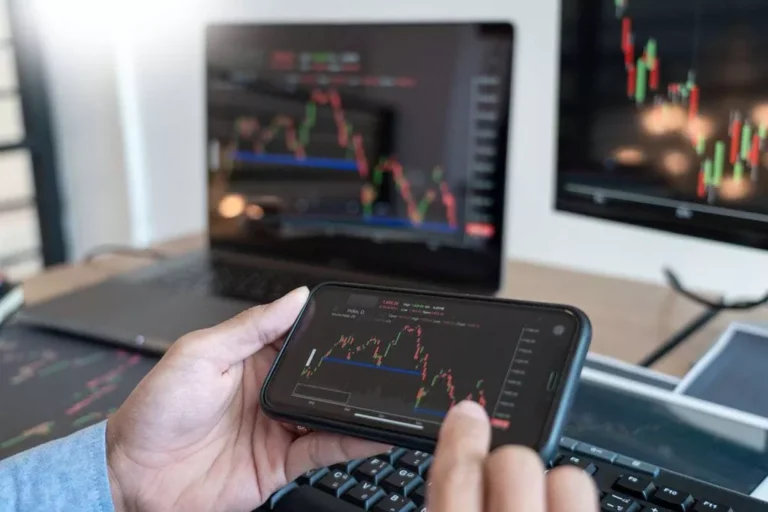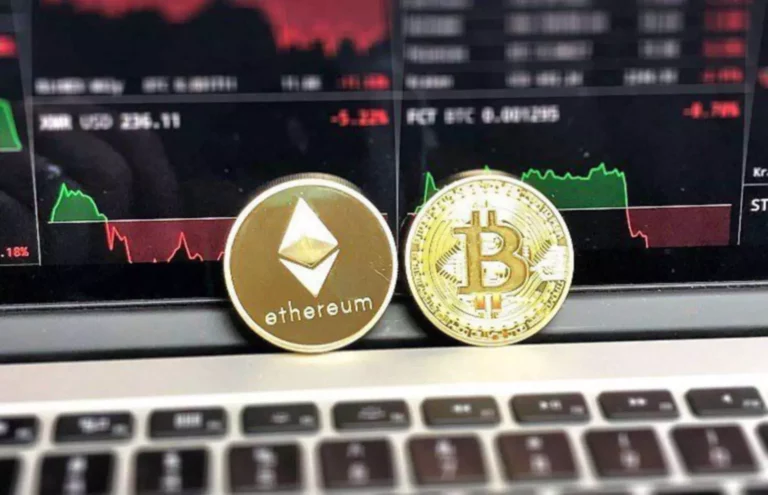Top 10 Forex Liquidity Providers in 2024
Content
Liquidity in forex also ensures that traders receive the best possible deals without having to wait or sacrifice their desired price quotes. The forex industry has been the lifeblood of global commerce since the very creation of global markets. Today, every local and international business depends on the sturdiness, growth and overall health of the foreign exchange market. Investors, traders, https://www.xcritical.com/ corporations, and even entire governments can function properly because the forex market runs smoothly.
Financial oligopolies and parallel exclusion in the credit default swap markets

Soroswap Finance uses liquidity pools instead of traditional order books to enable decentralized token swaps. Liquidity liquidity provider vs market maker pools consist of user-provided assets locked in smart contracts, allowing seamless, automated trades without relying on a centralized intermediary. This structure addresses key limitations of order books, such as the need for intermediaries, active management by market makers, and high infrastructure requirements.

Quick glance on Market Maker and Liquidity Provider
When someone wants to borrow USDC in exchange for ETH, for example, the tokens they receive will come from an existing liquidity pool containing the necessary funds. Additionally, the liquidity provider will get a new token called LP tokens when they provide liquidity to the market maker’s platform. These tokens are proportionally distributed depending on how much the liquidity providers have contributed to the trading pairs. LP token holders can also participate in yield farming by staking their LP tokens and making passive income. The AMM is the underlying system or protocol on which the DEXs function, enabling permissionless and automatic trading. On these platforms, trading takes place through the liquidity pool, paving the way for decentralization.
Best AML Software – Comparison for Crypto Businesses
Offers and payments are automatically optimized to determine whether swapping within a liquidity pool, through the order books, or both, provides the best rate and executes accordingly. This ensures that transactions use the most efficient path for trades, whether through offers on the DEX or through AMM pools, or a combination of the two. When the flow of funds between the two assets in a pool is relatively active and balanced, the fees provide a source of passive income for liquidity providers. However, when the relative price between the assets shifts, liquidity providers can take a loss on the currency risk. Founded in 2015 and acquired by a Japanese firm in 2020, B2C2 is one of the pioneering crypto liquidity providers that provide institutional access to cryptocurrencies. It does this by offering reliable fluidity across dynamic market conditions.
It has opened market making from an activity reserved for a few people to everyone willing to participate. The AMM also charges a percentage trading fee on top of the exchange rate. Join hands with Ninja Promo’s expert team of crypto market-making experts.
However, modern trading systems provide brokers access to a broader range of marketplaces. They can offer crypto CFDs, metals or commodities, and other asset classes. A brokerage should work with a liquidity provider that manages various assets since it is becoming more popular for many brokers to offer more financial instruments in addition to foreign currencies. It’s important to note that specific traders avoid working with market-maker brokers. This is because the market maker takes the opposite side of the customer’s transaction and stands to gain financially if the client loses money. By using an ECN/STP broker, the trader may be sure that a Tier 1 liquidity provider is carrying out the transaction and that the Forex broker is not taking part in any way.
While MMs provide a broader range of services and LPs are much more specialised, both institutions are irreplaceable for the growth and long-term development of the forex industry. Top-tier liquidity providers across the globe ensure that this market does not go down with the frequently changing conditions. Yet, if those are the cryptocurrencies that we’re talking about, especially about the small tokens, the liquidity matter gets especially exacerbated.
Mantle again stands out on the lower end, with the highest number of young wallets and low-balance wallets. PerformUpkeep is now called at the start of BootstrapBallot.finalizeBallot to reset the emissions timers just before liquidity rewards claiming is started. A LP can exploit this vulnerability to claim all the current staking rewards in the contract. Initially, there are 555k SALT bootstrap rewards per pool in the stakingRewardsEmitter, which are emitted at a rate of 1% per day. Liquidity Providing aims to improve overall stock liquidity and orderbook health.
One of the most exciting moments for any web3 project is when your token becomes liquid. Decentralized exchanges have opened the door for a diverse token economy, where any literally, any token can trade and gain liquidity. So let’s explore how to setup a decentralized liquidity pool for your token. Also, the liquidity provider is typically encouraged to provide an equal value of each token in a given pool.
- You’ll also want to consider the geography of your user base as some blockchains are more popular in specific regions in the world (for example Binance Chain is very popular in the east).
- Apparently, when somebody buys copious ETHs in the ETH/DAI pair, it diminishes the ETH pool and increases the DAI pool, which makes an instant impact on the exchange rate.
- A single transaction might execute by matching Offers, AMMs, or a mix of both, depending on what’s cheaper.
- Liquidity pools are essentially a reserve full of assets that collect the user-deposited coins for a seamless trading experience.
- A participant looking to provide liquidity or make markets must actively manage their orders, continuously updating them in response to the activity of others in the marketplace.
- The main problem boils down to the fact that the order book model is too dependent on a market maker’s (or market makers’) presence for each of the assets.
Subsequent liquidity providers must deposit assets proportional to the current pool price to prevent their contributions from being arbitraged. If they believe the current price is inaccurate, they can engage in arbitrage to adjust the price to their desired level before adding liquidity, ensuring their assets are valued correctly in the pool. A bank, financial institution, or trading firm may act as a core liquidity provider. The different business models and capabilities of these liquidity providers allow them to serve the market in different ways.
In other words, it defines a cryptocurrency asset’s availability or popularity in a platform. Cryptocurrency markets, especially decentralized exchanges (DEXs), use liquidity providers to augment the availability of assets for trading. A crypto liquidity provider (LP) is an individual or entity that supplies a decentralized finance platform with capital in the form of cryptocurrency assets. If an AMM doesn’t have a sufficient liquidity pool, it can create a large price impact when traders buy and sell assets on the DeFi AMM, leading to capital inefficiency and impermanent loss. To incentivize liquidity providers to deposit their crypto assets to the protocol, AMMs reward them with a fraction of the fees generated on the AMM, usually distributed as LP tokens. The practice of depositing assets to earn rewards is known as yield farming.
To see why, consider the case where the first liquidity provider deposits tokens at a ratio different from the current market rate. This immediately creates a profitable arbitrage opportunity, which is likely to be taken by an external party. Over the last four years, liquidity pools have become a major hub for investors looking to park their crypto assets and earn stable yields. Pools in Soroswap operate autonomously, leveraging smart contracts to continuously provide liquidity and execute trades. This design is more suited for decentralized ecosystems where tokens may have low liquidity and anyone can create or trade assets without permission.
The advent of liquidity pools saw some leading decentralized exchanges grow their liquidity base to surpass even some of the first centralized cryptocurrency exchanges. Returns for providing liquidity depend on how the pool works and what assets it holds. Sometimes, you may have to provide what’s known as “multi-asset liquidity,” meaning you must add both assets in a pool. For example, to provide liquidity to a ATOM/USDT pool, you may have to deposit equal amounts of both ATOM and USDT. Genesis is one of the best liquidity providers that provide crypto investors with a marketplace to trade, borrow and lend cryptocurrencies.
However, L2s aren’t just challenged with attracting liquidity; they are additionally challenged with ensuring they attract the right liquidity providers. The current implementation has an issue, particularly in how it deals with the virtualRewards calculation for the first user. Since there is no current shares in the pool, then the virtualRewards calculation is skipped. Market Making actively quotes two-sided markets in a particular security by providing bids and offers (known as asks) along with the market size of each. Market makers provide liquidity and depth to markets and profit from the difference in the bid-ask spread. By carefully evaluating these factors, you can make an informed decision when selecting a crypto liquidity provider that best suits your requirements and business objectives.